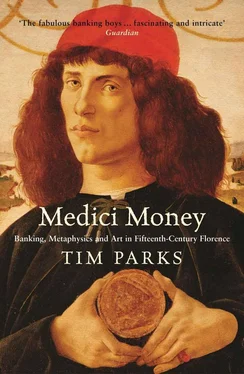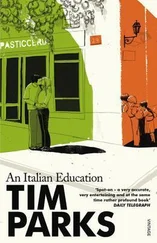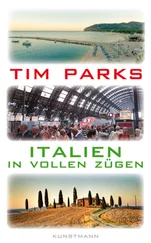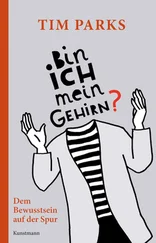LORENZO WAS NOW so suspicious of all and sundry that he routinely had official Florentine ambassadors in foreign courts shadowed and duplicated by his own personal spies. Yet his trust in his bank managers seemed unbounded. The overall director, Francesco Sassetti, a man quite incapable of taking unpleasant decisions, was left entirely to his own devices, despite the fact that he worked from Lorenzo’s house in Florence. In Rome, Uncle Giovanni Tornabuoni swung from gloom to optimism with no long-term vision, no flexibility. “The pope is as stubborn as a corpse,” he complained of Innocent’s unwillingness to repay his debts. Yet Tornabuoni continued to tie up most of the bank’s capital with the Curia. In Bruges, before the final showdown, Tommaso Portinari had actually managed to persuade Lorenzo to form a separate company for the only profitable business the branch was doing, the occasional importation of English wool. Since Portinari had a larger share in this company than in the bank, he took a bigger slice of the gains, while losing a smaller percentage on the branch’s overall losses. “He took advantage of my inexperience,” Lorenzo later complained. But Il Magnifico had been running the Florentine Republic for years at the time, and a child would have understood the mathematics of the deal.
An atmosphere of farce hangs over these last years of the Medici bank. A second generation of untouchables and prima donnas was now being trained up beneath the first. In Bruges, Antonio de’ Medici, a distant cousin of Lorenzo’s, was so arrogant that when the family promoted him to deputy director, the other employees threatened a walkout and he had to be recalled to Florence. Later, Antonio would be sent to Constantinople to negotiate, successfully, the extradition of Giuliano’s assassin, Bernardo di Bandini Baroncelli. In Lyon, Lionetto de’ Rossi, Lorenzo’s brother-in-law, was convinced that one of his staff, Cosimo Sassetti, son of the general director, had been sent to spy on him. Most likely he had; Lionetto, after all, had been writing the most insulting things about the boy’s father in vitriolic letters to Lorenzo. Fortunately, the young Sassetti was as credulous as he was offensive. Overwhelmed by losses from bad loans, Lionetto sent Cosimo back to Florence with a balance sheet reporting profits. The director’s son was the only one taken in. Arriving in Lyon to investigate, in 1485, a certain Lorenzo Spinelli wrote to Lorenzo to say that Lionetto was completely out of his mind.
The bank was paying the price for its fatal attraction to political power. To lend to people whose reputation and position do not depend on honoring their debts will always be dangerous, but to give huge sums to people who actually feel it is undignified to repay is madness. These were not the kind of people you could take to court. They were the court. Often a condition of lending to one of them was that you must not lend to another. Louis XI of France was furious that the Medici were financing his enemy Charles the Bold, and so took measures against the bank in Lyon. Tornabuoni, angry that the French branch wasn’t sending him the money for papal bulls, refused to honor an important letter of credit from Lyon. The bank’s reputation could only plummet. The Florence branch started trading silk with a separate, non-Medici agent in the French town. At least they knew they would be paid. Lionetto was furious. How can I ever get my branch back into profit if the others take their business elsewhere? Far too late, Lorenzo sweetly invited his brother-in-law back to Florence to discuss matters, and on his arrival had him arrested and thrown in a debtors’ jail.
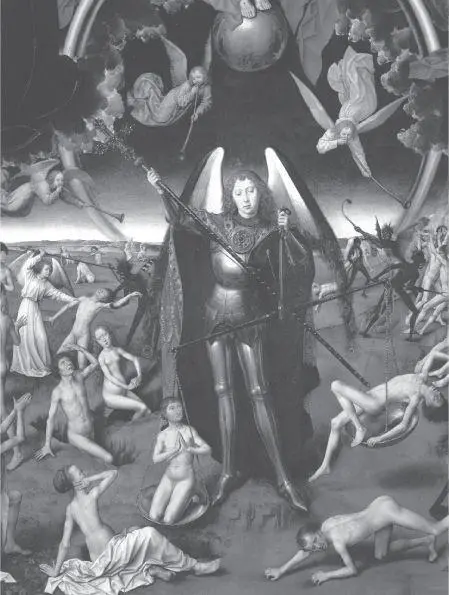
Hans Memling’s The Last Judgment (detail), commissioned by Tommaso Portinari. Despite losing 100,000 florins for the Medici bank, Tommaso instructs the great painter to imagine how the Angel of Death will weigh him in the balance when the bottom line is finally drawn .
It wasn’t the first time. Returning to Florence after the closure of the London office in 1480, Tommaso Guidetti had been arrested on the request of the Venice branch of the bank. He had not paid them for a shipload of currants. The debt amounted to more than 3,500 florins. I paid Tommaso Portinari in Bruges, was Guidetti’s claim. It was feasible. All the same, he had to flee from Florence, leaving behind a teenage wife, pregnant. The case was still unsettled more than thirty years later.
But a considerable number of court cases were now underway. Lorenzo was being pursued for the money he had taken from his young cousins, the two sons of Pierfrancesco de’ Medici. In 1485, the precious country villas had to be sold to make amends. It was a huge loss of prestige. The legal battle over the seizure of the Bruges galleys would go on into the second decade of the next century. With justice on his mind, Tommaso Portinari had Hans Memling paint him kneeling, naked, on one side of a pair of giant weighing scales held up by a great black Angel of Death. It is extraordinary that the Last Judgment scene, the final assessment of a man’s moral worth, something that had been so disturbing to the merchants of Cosimo’s time, should have become a vehicle for this sort of confident exhibitionism, as if the man were quite sure he was on his way to paradise. Weighing up Portinari’s performance in Bruges, Lorenzo calculated a loss of 70,000 florins. “Such are the great earnings that the management of Tommaso Portinari has brought,” he noted ironically. He was wrong. Losses were well over 100,000 florins.
Avignon closed down in 1478. Likewise Milan. The famous palazzo was sold. One of the two wool workshops had already gone. The silk workshop closed in 1480. That same year, the London and Bruges branches with all their debts were formally handed over to Portinari. Venice closed in 1481. In 1482, a proposal for restructuring the whole bank was drawn up. There would be two holdings, one under Tornabuoni, running Rome and Naples, the other under Sassetti, running Florence, Lyon, and Pisa. Two barons, two entirely separate entities to satisfy two considerable egos. Total capital would be only about 52,000 florins, of which Lorenzo’s part was under 20,000, the merest trifle compared with the vast sums he had inherited. Nothing became of the plan. Nothing was done to coordinate the remaining branches or to have their directors care about each other’s losses. Making no serious contribution to economic activity, serving only to finance wars and the consumption of luxury goods on the part of a debt-ridden aristocracy, the Medici bank continued its inglorious decline through those years that would soon be referred to as “golden.” Pisa closed in 1489. Which left just Florence, Rome, Naples, and Lyon.
FORTUNATELY, THERE WERE other things for bankers to do aside from banking. Cosimo had used his staff to hunt down ancient manuscripts. Piero had bought paintings, tapestries, ponies for the kids. After 1483, Lorenzo began to send his bank managers on a hunt for lucrative Church appointments for his fourth child and second son, Giovanni, who had just received the tonsure and ordination into the priesthood. He was eight years old. Almost immediately, the Lyon branch of the bank entered into negotiations that would make the boy abbot of Fontdouce in western France. Later he acquired the priory of Saint Gemme, near Chartres. Ecclesiastical incomes were steady and risk-free. The monks of the Abbey of Le Pin, near Poitiers, barricaded themselves inside when Cosimo Sassetti arrived with orders to take possession in the name of the infant bishop. Having lost so much through banking, Lorenzo had finally found a way of making money in which he excelled. It was a question of connections, favors, gifts, promises. One by one the Church benefices fell into his son’s lap: the Abbey of Passignano on the road to Siena, churches in Prato, the Arno Valley, the Mugello; the Abbey of Monte Cassino near Naples, Morimondo, near Milan. By the time the bank collapsed, the Church incomes would be there to give the family a new economic base.
Читать дальше
